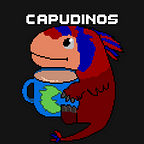(Top 6) Opabinia regalis
If with my before blog you believe that Anomalocaris is a so weird creature. I think will make you think about the nature limits when you observe his far “cousin” Opabinia regalis. To the naked eye he seems a fiction animal invented by an extravagant mind.
¿What is?
As I wrote earlier, Opabinia is the Anomalocaris “far cousin”, but: how close were they? Although they don’t belong to the same family (actually, Opabinia is the only his family member), Opabinia and Anomalocaris belong to “Radiodonts” order, here are the Anomalocarididae, Opabinidae and Hurdidae. As can be seen in the Picture 1, Opabinia has five eyes and an extended proboscis (The “trunk”).
History of Discovery
Opabinia was discovery in rocks from 505 million years ago, in Burgess shale, where is it located Opabin peak, the origin of the creature name. He was found by the paleontologist Charles Walcott and describe by himself in 1912. Walcott confused the proboscis with a worm, thought that exist a thickness variation.
Own characteristics
Although not visible in the pictures, Opabinia actually was so small animal compared with Anomalocaris, therefore, he could not be given the freedom to compete with great creature of Cambrian. The Opabinia vision allowed him to observe 360° in each of his five eyes, also has a great proboscis quite flexible, it is believing that the proboscis could have served as a “shovel” to catch prey and move them to its mouse. His body is very similar to Anomalocaris, with similar aileron.
Habitat and competition
The most probably is that Opabinia was an animal that roamed the seabed, while searching prey smaller than him to feed, under the darkness of the great creatures like Anomalocaris. Probably lived in constant alert, watch out for any danger.
Reference
Briggs, D. E. 2015. Extraordinary fossils reveal the nature of Cambrian life: a commentary on Whittington (1975) “The enigmatic animal Opabinia regalis, Middle Cambrian, Burgess Shale, British Columbia”. Philosophical Transactions of the Royal Society B: Biological Sciences, 370(1666), 20140313.
Budd, G. (1996). The morphology of Opabinia regalis and the reconstruction of the arthropod stem-group. Lethaia, 29(1), 1–14. https://onlinelibrary.wiley.com/doi/10.1111/j.1502-3931.1996.tb01831.x
Daley C. A. The morphology and evolutionary significance of the anomalocaridids. Digital Comprehensive Summaries of Uppsala Dissertations from the Faculty of Science and Technology. 714. 40 pp.
Whittington, H. B. 1975. The enigmatic animal Opabinia regalis, middle Cambrian, burgess shale, British Columbia. Philosophical Transactions of the Royal Society of London. B, Biological Sciences, 271(910), 1–43.
